The KITH Knicks and New York Fetishism
city ain't the same. but why?
I’ve been rewatching Mad Men recently. In Season 3, there’s a brief subplot involving the building of the new Madison Square Garden. The men in charge of its construction approach Sterling Cooper concerned about their image: many citizens are up in arms about the construction’s plan to demolish the old Penn Station, a sprawling Beaux-Arts structure, to make way for the new arena. It should be a familiar tale to anyone who has lived in a city, or has a relationship to anything inanimate in this life, whether it’s your favorite restaurant getting bought out, a bowling alley getting shut down, or the house you grew up in getting torn down in favor of a gaudy structure that obeys no architectural tradition, a manifestation of the crackpot mind of its new owner. Out with the old, in with the new.
After losing in the second round of the playoffs to the Indiana Pacers, the New York Knicks decided to blow up their roster with two blockbuster trades that became the talk of the offseason. The first was trading five first round picks and aging Croation bucket-maker Bojan Bogdanovic (and some benchwarmers, all love to Shake Milton) in exchange for Mikal Bridges, a cuspy all-star wing and former Villanova teammate of Jalen Brunson, Josh Hart, and Donte DiVincenzo. There were talks of the power of friendship and college basketball championship experience being prioritized over the team’s present and future needs. But no matter, they wanted to win now. Once Julius Randle and Mitchell Robinson were healthy, the only missing piece would be a reliable big man to replace the Isaiah Hartenstein-sized gap in the roster. Fans online made up potential starting lineups without Mitch, with Randle at the 5 that would make for small-ball but a suffocating defense with OG Anunoby and Bridges at the wings. People got excited at the idea of floor spacing, with a coterie of shooters to draw out defenders from the paint, allowing centerpiece Brunson to do what he does best.
Then, with weeks to go before the start of the season, the Knicks took over the timeline again, trading Julius Randle and Donte DiVincenzo to the Minnesota Timberwolves for Karl-Anthony Towns, the self-proclaimed “greatest shooting big man this game has ever seen.” While many fans were glad to get rid of Randle, who would give you a consistent 24 and 10 every game then disappear in the playoffs, most were sad to see DiVincenzo go, a sneakily quick, three-point shooter who was never afraid to pull the trigger. He became immortalized in Knicks history during the playoff series against the Philadelphia 76ers, when he made a go-ahead three in the final seconds of the game, capping a 6-point turnaround in the span of about 14 seconds. It also doesn’t hurt that he’s Italian-American, in a city that comedically celebrates the stereotypes of Italian-American heritage as much as its perpetrators believe it gets torn down on a day-to-day basis. In Randle and DiVincenzo, with their bully ball and shit-talking respectively, fans felt the team lost a sense of grit and toughness that had characterized New York Basketball for the past few years.
I don’t want to speak ill of this new team from a playing standpoint. For the most part, in my opinion, they’re playing well. Towns, the Dominican New Jersey native who accepted my Facebook friend request back in 2011, has been playing phenomenally, as an athletic big who can stretch the floor but take in the ball when the opportunity presents itself. The Knicks have some kinks to work out, namely an underperforming Bridges and a lackluster defense, but I’m sure they will figure it out. And if they don’t, who cares, that’s sports as a fan. What I’m more interested in is what this team has become culturally. What does “New York Basketball” mean, but more importantly, does the current state of Knicks basketball tell us anything about the current state of New York City?
At the beginning of the season, some key players of the new Knicks team modelled for a campaign showing off Knicks-branded apparel from KITH, the retail empire headed by New York cornball magnate, Ronnie Fieg. In late 2022, Fieg was appointed as the Knicks’ first ever Creative Director, an endlessly memed-about job title that epitomizes the unskilled, vibes-based labor of our times. The works of his tenure included a uniform and court redesign labeled the “City Edition,” the uniforms being a callback to the Knicks Jerseys of the early 2000s, arguably a time when the team had more grit and character than it ever has since. Any conversation about all-time favorite Knicks typically include Allan Houston, Patrick Ewing, Larry Johnson, and Latrell Sprewell, all key members of the team that made the 1999 NBA Finals. While the designs on their own are hideous and uninspired, like anything KITH does, they’re hedged by a callback to the good old days, which acts as a shield from any valid criticism. This is a common tactic in the menswear and streetwear space. Though there aren’t actual stats on this, I am willing to bet that most of the moodboards of every clothing brand targeting a male audience include images of the same things: vintage Ralph Lauren advertisements, vintage J. Crew advertisements, 90s and early 2000s graffiti crew pics, random pics of the Lo Lifes crew. Supreme’s ace in the hole during any type of downturn is simply dropping a North Face capsule. Nostalgia always sells, so why take a risk on the future when you can always bet on the past?
I would be remiss not to mention the other culprit of this type of New York nostalgia-core, Aime Leon Dore, helmed by another Queens guy, Teddy Santis1 . A look on their Instagram page tells you everything you need to know about their brand and what they stand for: allowing guys from the West Village and Murray Hill to feel secure in their position as mere parasites in the cultural ecosystem of the city. Buy our stuff and you too can look like an extra from Mean Streets with a flash of hip. It’s extremely telling that a few years ago they dropped a collection of pre-owned, vintage merchandise, the items ranging from vintage Ralph Lauren, niche New York memorabilia t-shirts, North Face jackets, and of course, the Knicks jerseys of Patrick Ewing, Latrell Sprewell, and John Starks.
The Knicks have been trending corporate for quite some time now, at least since the COVID bubble hoops and when they became a winning team. There were signs, such as the rising ticket prices, which resulted in a shift in the crowds actually attending these games. Post-win celebrations outside the Garden were no longer a place to jump in joy with your friends and fans, but a place for rabble-rousers to go viral with how ridiculous they can get. MSG became a space for an unchecked, typically male id, where you can freely shout “fuck Trae Young” even though it’s 2024 and the team is playing a regular season game against the Utah Jazz. Arguably like the rest of the NBA, being a fan of the Knicks was increasingly less about the hoops itself, and more about the culture surrounding the fandom. Twitter fancams, KnicksMuse accounts, listening to the Roommates podcast, deliberating on who was a fake fan on celebrity row, and celebrating the organization for including what I will call the “Unc Row,” a section near the baseline that included the great Knicks of yore like Starks, Johnson, Bernard King, and Carmelo Anthony.
For the most part, though, it was all noise. The players continued to play hard, and watching Brunson will this team to victory night in and night out during the latter half of last season was one of life’s great joys. He’d get banged up and thrown to the ground, tweak his ankle in the second quarter and come back in the third, and move with such incredible footwork in the paint that I’m confident it inspired many short kings on the blacktop to work on their inside game. This season, however, while they’re still playing well, the noise is becoming harder to drown out. It feels like the players have bought into a caricature of New York basketball culture as well, whether it’s posing with RZA for some Dunks, or KAT walking through the tunnel with an AI-Generated “NYC cool guy” outfit. I don’t want to spend too much time on fit analysis, but I strongly believe there is a difference between Randle wearing a Dipset T-shirt in July 2019, and Towns wearing a Dipset Knicks Jersey and Timbs in October 2024, after the Dipset Lox Verzuz battle in 2021, after Cam’Ron launched his show “It Is What It Is” with Mase, and after the iconic, viral Freekey Zeekey interview where he famously swings his body to the side. There is something such as trying too hard to be “deadass” incarnate, an all too common epidemic these days.
****
Around 2016, during my sophomore year of college, people started hurling New York slang back at me on my liberal arts campus in small town Western Massachusetts. Kids from Midwestern suburbs were making jokes about Timberlands and bacon egg and cheeses, misusing “brick” to describe the weather, and saying deadass in the strangest accents with misplaced emphases, as if it were a word they only saw in text and had never heard aloud before trying to use it. This somewhat coincides with the rise of New York City as an online entity, to be consumed by the mass public through popular meme pages. It’s around the time that New York Nico started gaining serious traction documenting the lives of kooky New York characters on Instagram. It’s also around the time that Desus and Mero began the Viceland iteration of their talk show, making anyone who tuned in feel like an insider on the happenings of the city. Some parts were strange to live through, like not being able to order a breakfast sandwich in peace, but it was mostly jarring to see the ways of speaking and acting you never thought too much about suddenly be pointed out to you. It’s not quite the feeling of shame that a child of immigrants might feel amongst white people when they do or say something outside widely accepted White American customs, like saying “close the lights,” but there are hints of it embedded in constantly seeing a butchered form of your culture spat back at you — is mockery not one way to express envy?
I asked Mero what he thought about this, as a key figure in bringing New York culture online. I grew up watching and listening to his work whenever I felt nostalgic for home, and it’s been an immense pleasure to be working with him every day for the past few years. I’m including some screencaps of our conversation:
The line from baconeggandcheesesaltpepperketchup to ordering a chopped cheese the ocky way is rife with grifters looking to capitalize on this cultural bastardization. In some ways, we are a meme city as much as we are a real one. Our Manhattan parks are sites of spectacle, where we have celebrity lookalike contests, people chase you down with microphones, and we gather to watch men too afraid to reveal their face eat a jar of cheese balls. You’ll see more photos and videos of people on the subway just minding their own business than you will performers contorting their body for some change. Elsewhere, a truck covered in graffiti serves you deli classics while a pair of Timbs hang from the side mirror. If that doesn’t suit you, grab yourself a gourmet Glizzy, but not from those trucks you see everywhere that upcharge you for bottles of water. If you keep hanging around the viral Italian sandwich shop, you might catch a glimpse of the cast of Italian characters that flirt with self-parody, all in the hopes of flicking up with the golden goose: a concerningly fat Italian child who has become revered as a King Solomon for the modern age. I cannot wait for a sculpture of cooked ground beef in the shape of the Rizzler to be unveiled at the next San Gennaro.
While I was tucked away in Berkshire County hitting the books, the idea of New York City and the world’s obsession with it ballooned, as did the cost of living and operating any type of business. When I graduated college and came back, there were changes that I chalked up to the inevitable passage of time: dingy places I used to frequent closing down, bars we used to stroll into with ease becoming hotspots with lines and velvet ropes. But the other thing I noticed, for lack of a better term, was a vibe shift. Firstly, there were a lot more white people, and not just the preppy, WASPy ones from the Upper East Side, or the Bridge and Tunnel goombas looking for a night out on the town. Everywhere was crowded. Bars that were known as haunts for underage kids with fake IDs were now filled with working adults. People who weren’t college interns were going out at Phebe’s, B-Bar, and Bowery Electric, hitting on nineteen year olds and vice versa. Where were we supposed to go, now that things were starting to look cooked? My friends and I didn’t know, but there was a joy in not knowing, the allure that came with mystery and the potential of discovery. If we kept on walking around, maybe we could stumble on to the next best thing. At the time, that felt like the whole spirit of New York. You walk down the street, you see some cool shit popping off, and you tap in. The journey was just as fruitful as the destination, and your night could take you anywhere.
Maybe it’s still like that for a lot of people and I’m just washed, but post-COVID New York is no longer marked by that trademark spontaneity, but one marred by deliberateness and calculation. Your route for the weekend is planned days or weeks in advance, from the moment you book a restaurant on Resy. If you don’t know about some pop-up in advance, how else are you supposed to line up for it hours before opening? Grabbing a slice was no longer an act of convenience on the way to your next engagement — it was the whole event. Your whole day now revolves around waiting in line for Joe’s, or l’Industrie, or Paulie Gee’s, or Fini, or chasing after an elusive pie of Chrissy’s seconds after the Instagram drop. Ten years ago, people lined up for Cronuts in the cold outside Dominique Ansel bakery and most of us didn’t understand what the big deal was. Now everyone waits in line for everything.
This is more than just complaining that your favorite spot got blown up and you can’t just walk in there anymore. It’s seeing people who have no personal connection to anything, going to a place simply to say they have gone there, collecting institutions and experiences like badges. It leads to a homogeneity of taste and experience, something antithethical to the diversity of this city. Pete Wells gets at this better than I can:
“People who consume a steady diet of bucket lists and viral videos rush from one restaurant to another so they post about it, to prove they were there. They go to places solely so they can put a photo of the viral egg sandwich or rainbow bagel on Instagram. Whether the sandwich or bagel tastes good is irrelevant; the point is to prove they were there.”
In a post-COVID New York, everyone feels that their time is as precious as ever, so why would you risk your time and money and go somewhere that might be bad? Why would you put that wack shit on your Beli for everyone to see? Every day, every waking moment, we are hedging ourselves against disappointment.
Part of the joy in watching the Knicks was the element of surprise and anxiety. Was Randle going to disappear or was he going to give you the performance he’s capable of? Who was DiVincenzo going to fight with? The anxiety allowed for the potential of both joy and anguish. Perhaps it’s not a stretch to believe this was what it was like on any given day here. Every day was full of surprise, whether it was who you were going to see, what new store or restaurant you were going to walk by, where you were going to kill your time today. Everything now feels predetermined. Everyone knows where to eat now because of Instagram or Eater lists, and information that was previously in-the-know is available for all if you know where to look online. The only difference is people are still trying to convince you of the dream. Our current mayor tells us that:
“This is a place where every day you wake up you could experience everything from a plane crashing into our trade center to a person who’s celebrating a new business that’s about to open.”
Even a broken clock is right twice a day. As you take pictures of your Au Cheval burger, the one you waited so long to try, helicopters whirr above you, keeping watch down below as cops kettle protestors on the bridge, delaying a delivery driver who needs to get a Sweetgreen bowl to someone before the kale gets soggy because they didn’t think to ask for dressing on the side.
It’s interesting to see MSG and the James Farley building next to each other if you find yourself in the area2. One, with its columns and ornamental flourishes, reveres history and memory as much as it relies on modern materials and techniques for its construction. These days, it seems to make a statement that what we have produced in the past should matter, and preservation should be integral to a city’s mission, even as it pushes ever forward. The other is a testament to the future, eschewing adornment for sleekness, which means its walls can make room for more real estate for large digital screens that hawk products and events, convincing you to spend every last dollar you have. It’s selling you the idea of New York more than it is paying homage to it. This increasingly appears to be the world we live in. And as always, New York City is at the forefront of our acceleration into the wasteland.
There’s something in the water in our borough that breeds this attitude, a type of unvarnished sincerity mixed with a fetishization of the grind. It’s quintessential Queens guy shit, but I haven’t quite figured it out yet. Maybe the simple truth is that guys like this grew up in middle-class homes watching Scarface but convince themselves they came up from the mud. Queens Get the Money, I guess.
I couldn’t quite find a place for this, but this piece by architectural critic Herbert Muschamp, published in 1993, is a perfect recapitulation of the arguments we have over and over again about this city. What do we choose to honor, and what does the future look like? Over thirty years later, it seems we have settled on being the world’s premier “electronic jukebox".


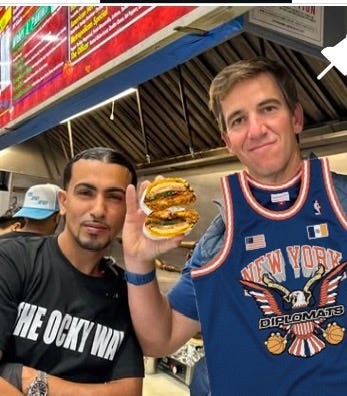
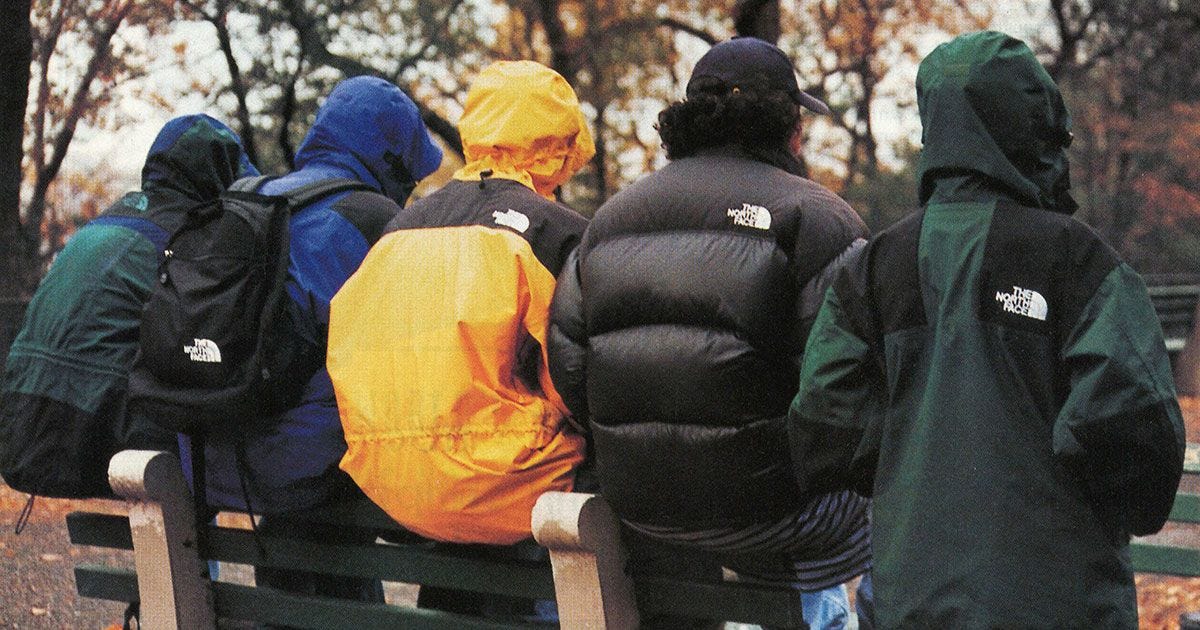
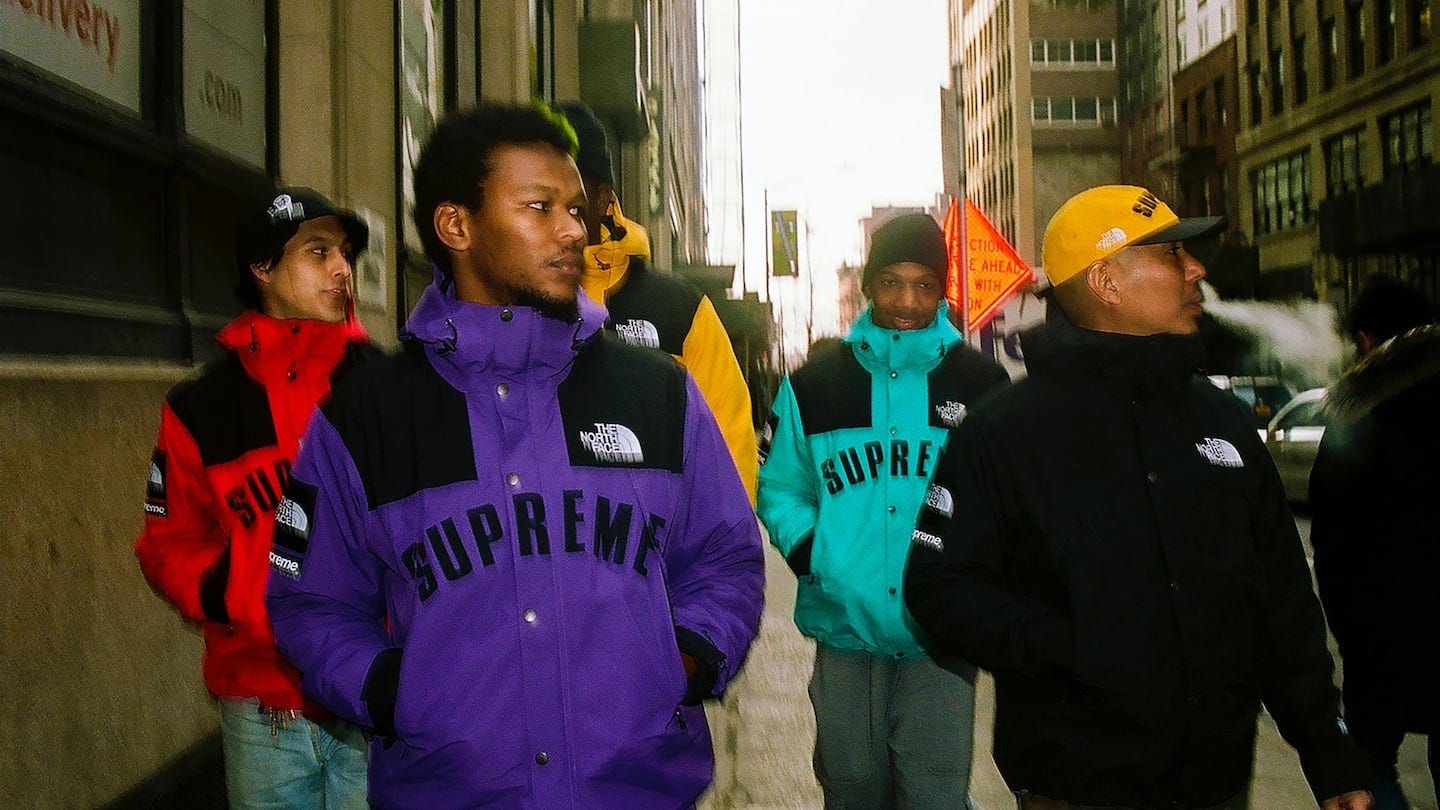
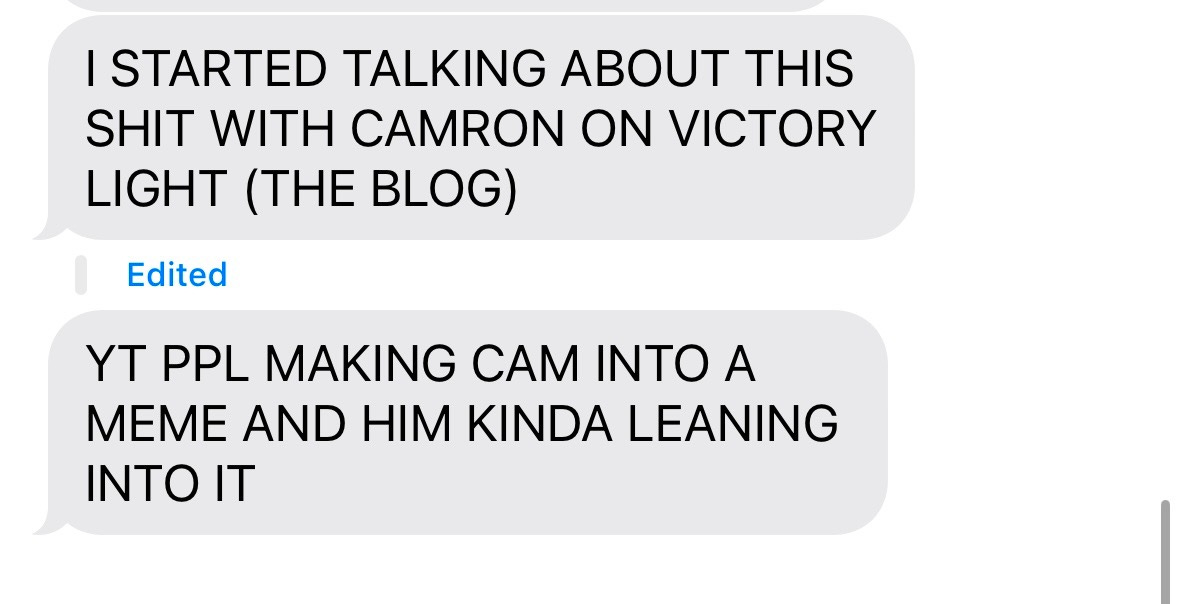
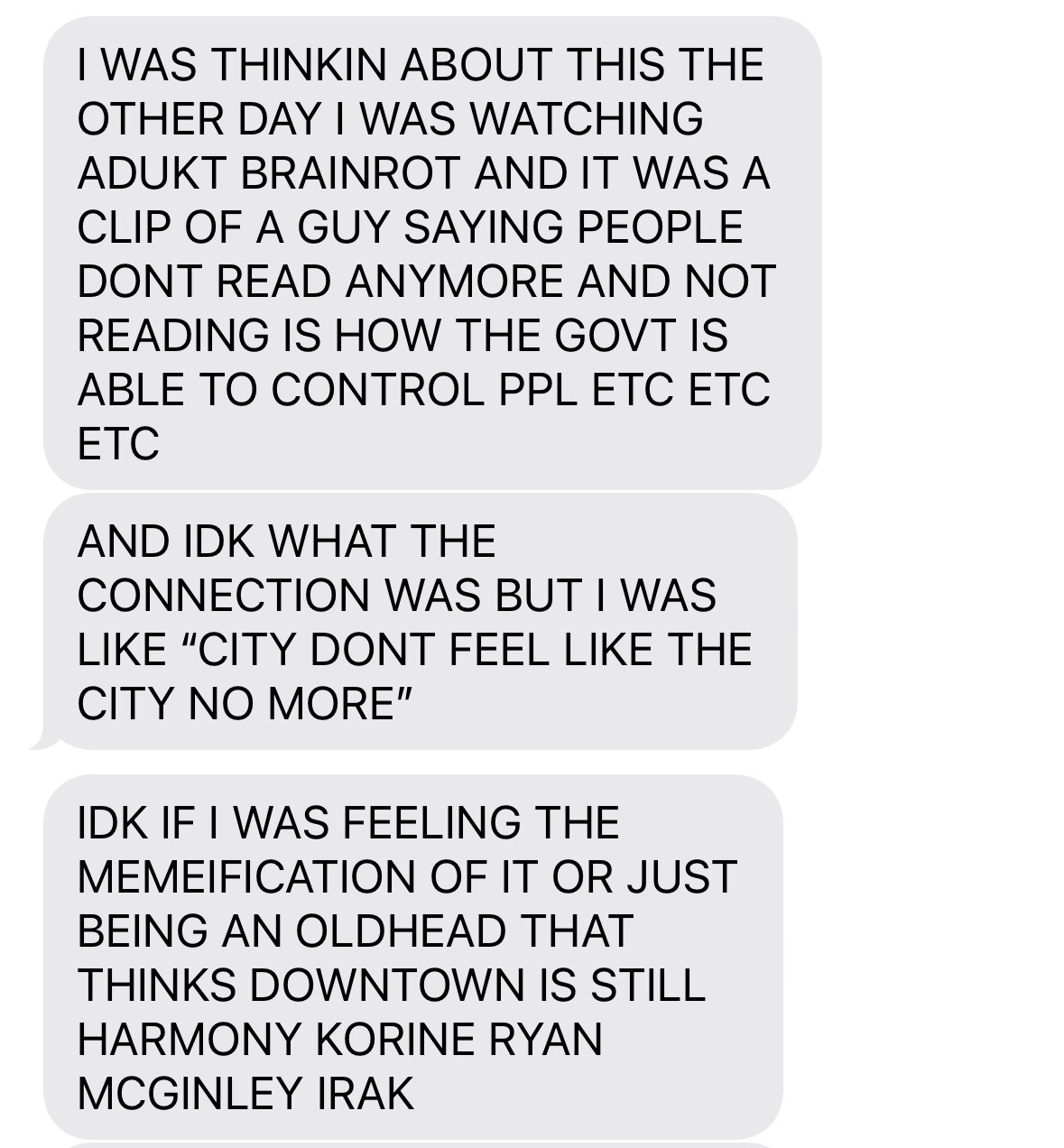

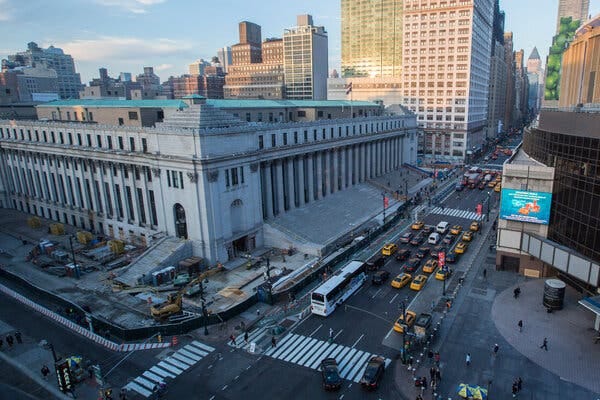
Great read. You're right in a lot of ways, but I think that spontaneity, that "vibe" is still there if you look hard enough for it. More difficult to find, but possible. Hop on a Citi Bike and turn down a new street, take a subway one stop further than you usually would, and you might surprise yourself.
Maybe just me being optimistic but, hell, what other choice is there?
fun read. even boiling down to the subway, people don't know how to act anymore. let people off before you get on!!